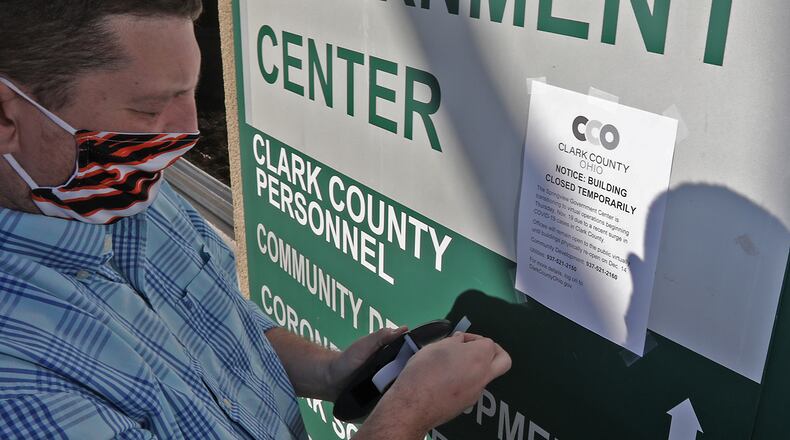CARES Act money was distributed to local governments reeling from the impact of the coronavirus pandemic. How much that was allocated was a result of several bills from the Ohio Legislature. All of that funding came from the state’s portion of Coronavirus Aid, Relief and Economic Security (CARES) Act funds that were approved by national lawmakers early on in the pandemic.
Clark County’s governmental entity received around $2.7 Million from the first two rounds of funding from the State. The third round called for the allocation of an additional $4.8 million, according to the Clark County Auditor’s office.
“We have taken care of and met all of the initial requirements,” said Clark County Administrator Jennifer Hutchinson in terms of how the money was spent on a local level.
Money distributed to local governments was to be used to cover expenses that were not budgeted prior to and were a direct result of the pandemic. Funds could also be used to finance community programs that aimed to help small businesses impacted as well as residents struggling to make rent and utility payments.
Hutchinson said that the largest expenditure for the county was related to salaries and other personnel related expenses resulting from the pandemic. That included overtime as well as employees taking on additional responsibilities as the county grappled with the sudden impact of the pandemic.
Those federal relief dollars were also used to reimburse expenses related to equipment and supplies needed to make work and public spaces safer as well as accommodate the need for a large number of employees to work remotely.
Funding coming from the CARES Act could not be used to fill in gaps in general fund budgets due to a drop in tax collections and other revenue sources for local governments.
“Thankfully we did not have a huge dip in sales tax. Where we saw the most effect was on our investment earnings. That was the biggest hit that we have seen,” Hutchinson said.
But that money could be used for several programs to help residents and businesses suffering from the economic impacts of the pandemic. Two programs were established by the county in October using CARES Act funding to help residents as well as local small businesses and nonprofits that were financially impacted by the coronavirus pandemic.
About $200,000 was allocated to provide residents who qualified with rental and utility assistance. Those impacted could have been laid off, had hours reduced at work or seen a general decrease in income as a result of the pandemic.
An additional $300,000 was allocated to help small businesses with less than 50 employees as well as local nonprofits. The goal was to provide grants of up to $15,000 to those that have suffered financially due to the pandemic as well as from statewide measures designed to curb the spread of the virus.
Clark County spokesperson Michael Cooper said there was a high demand for both of those programs and funding ran out for them in December.
He added that the county also set aside funds to combat an increase in homelessness in the county as well as allocated about $200,000 to buy equipment to help schools that were adjusting to virtual learning options.
About the Author

